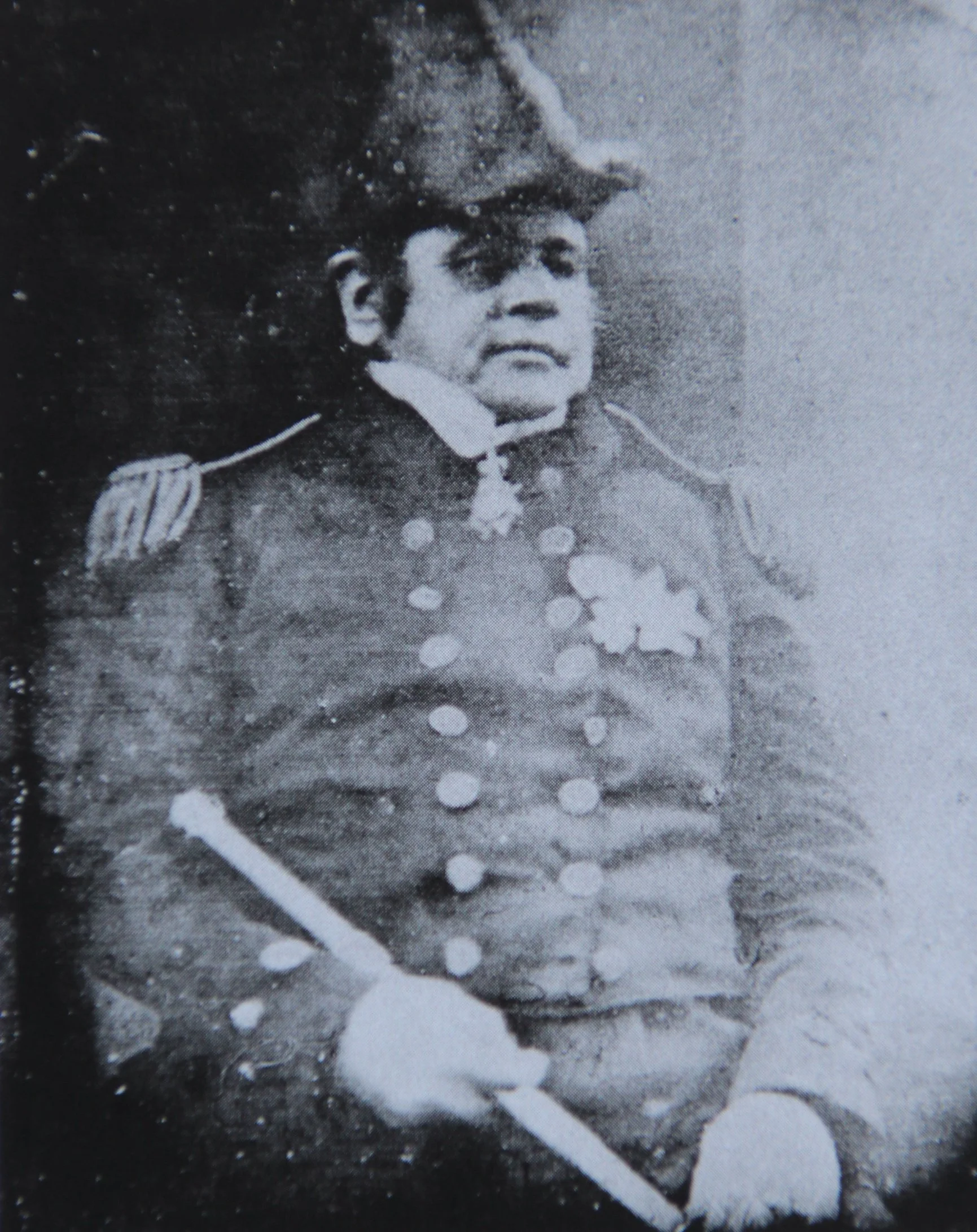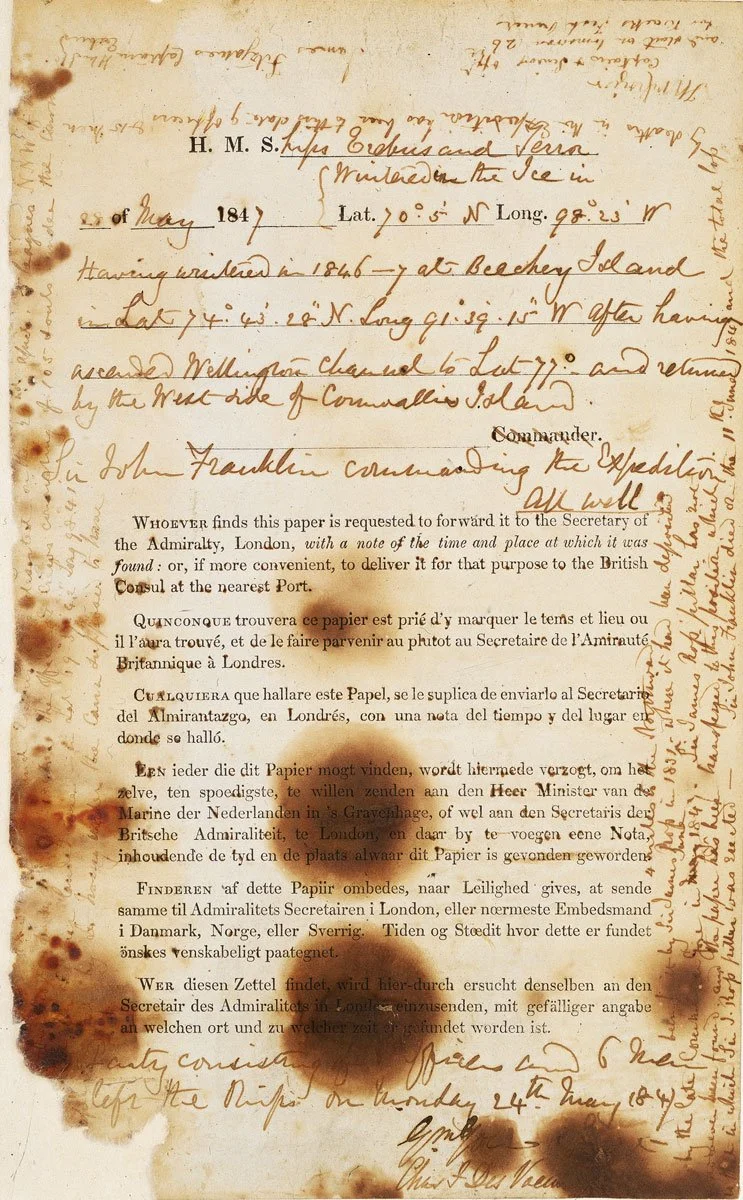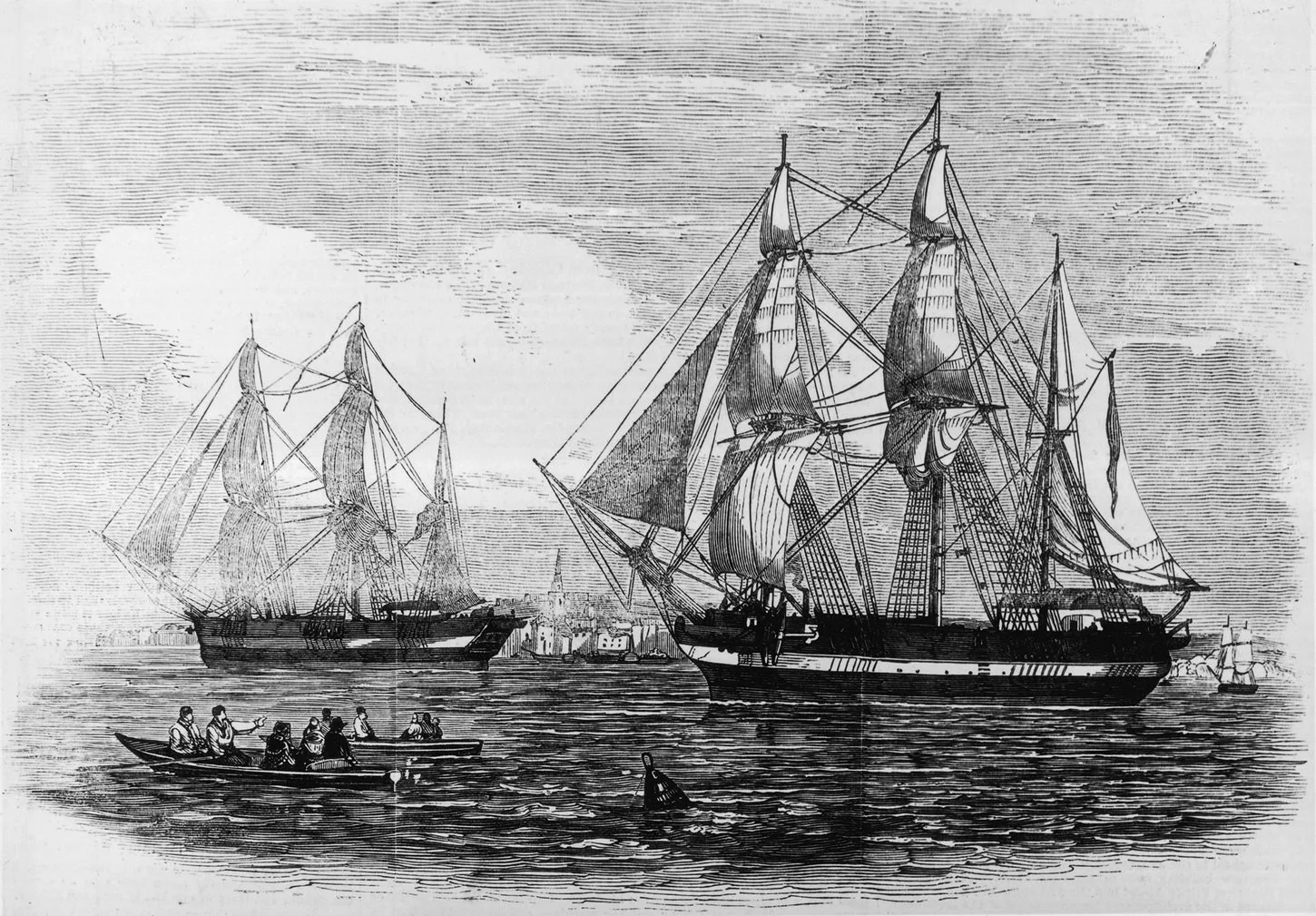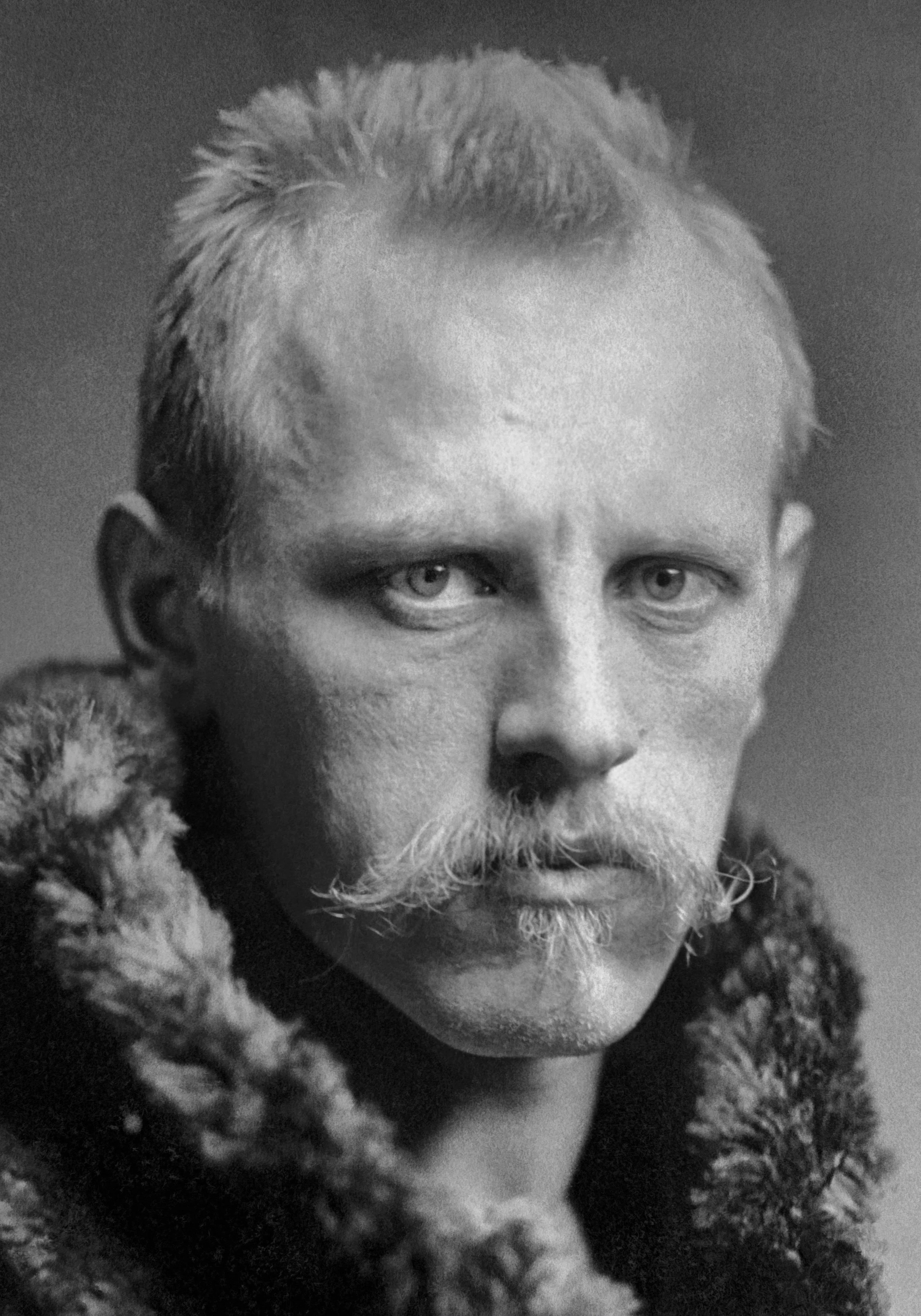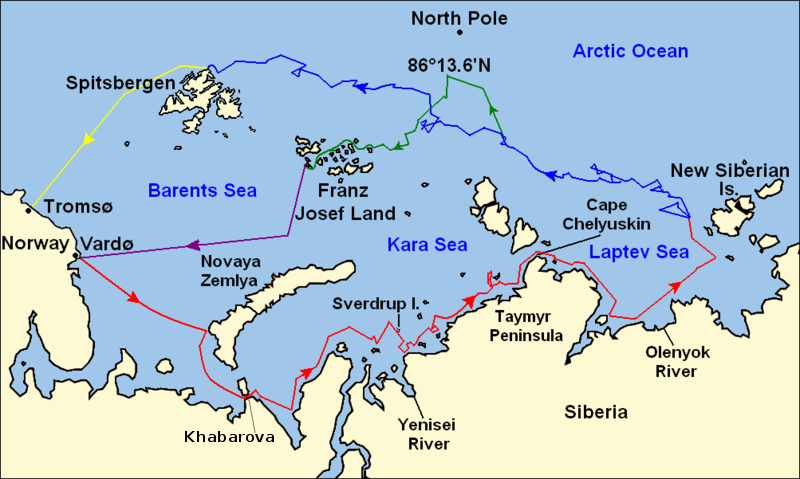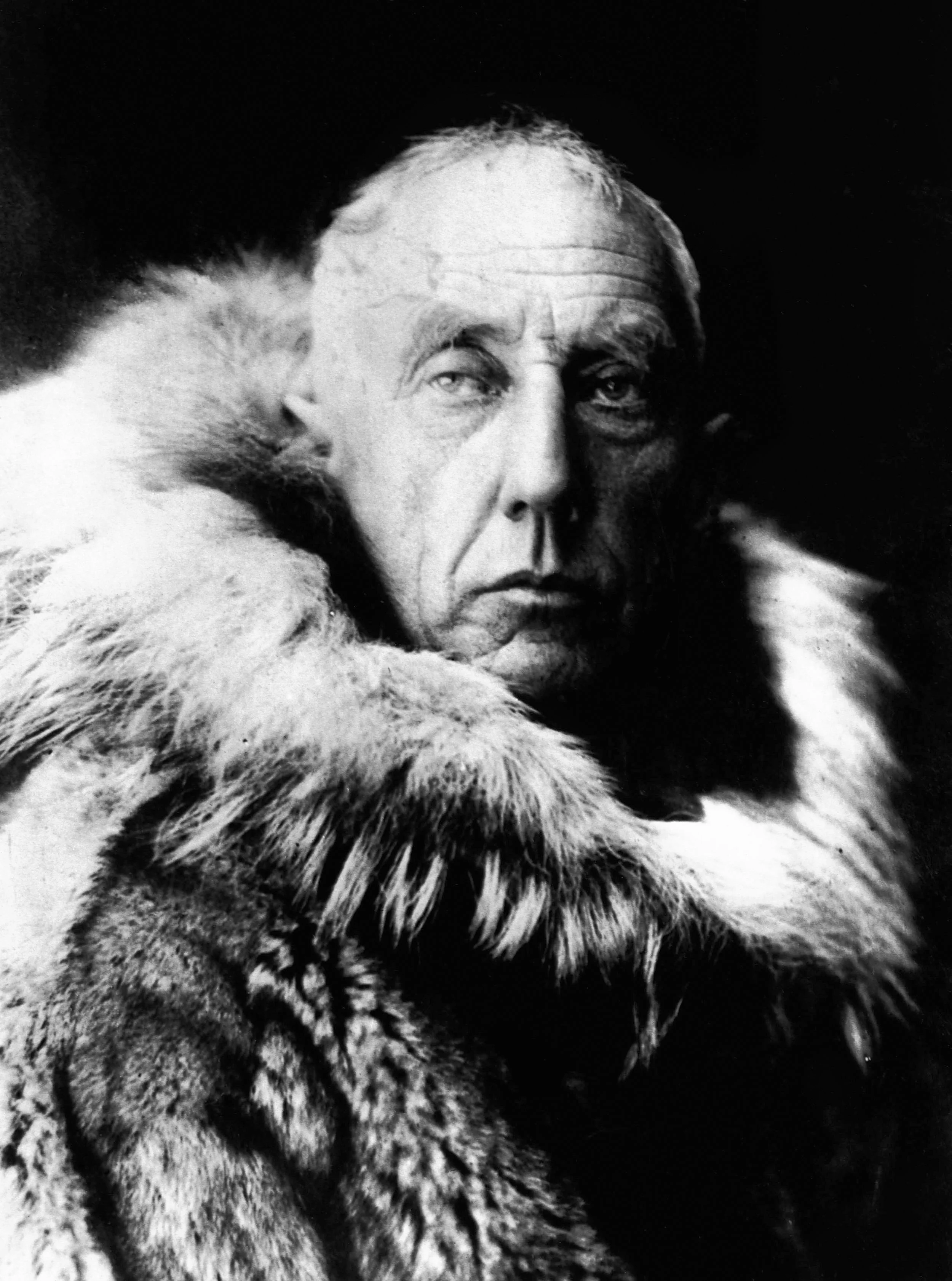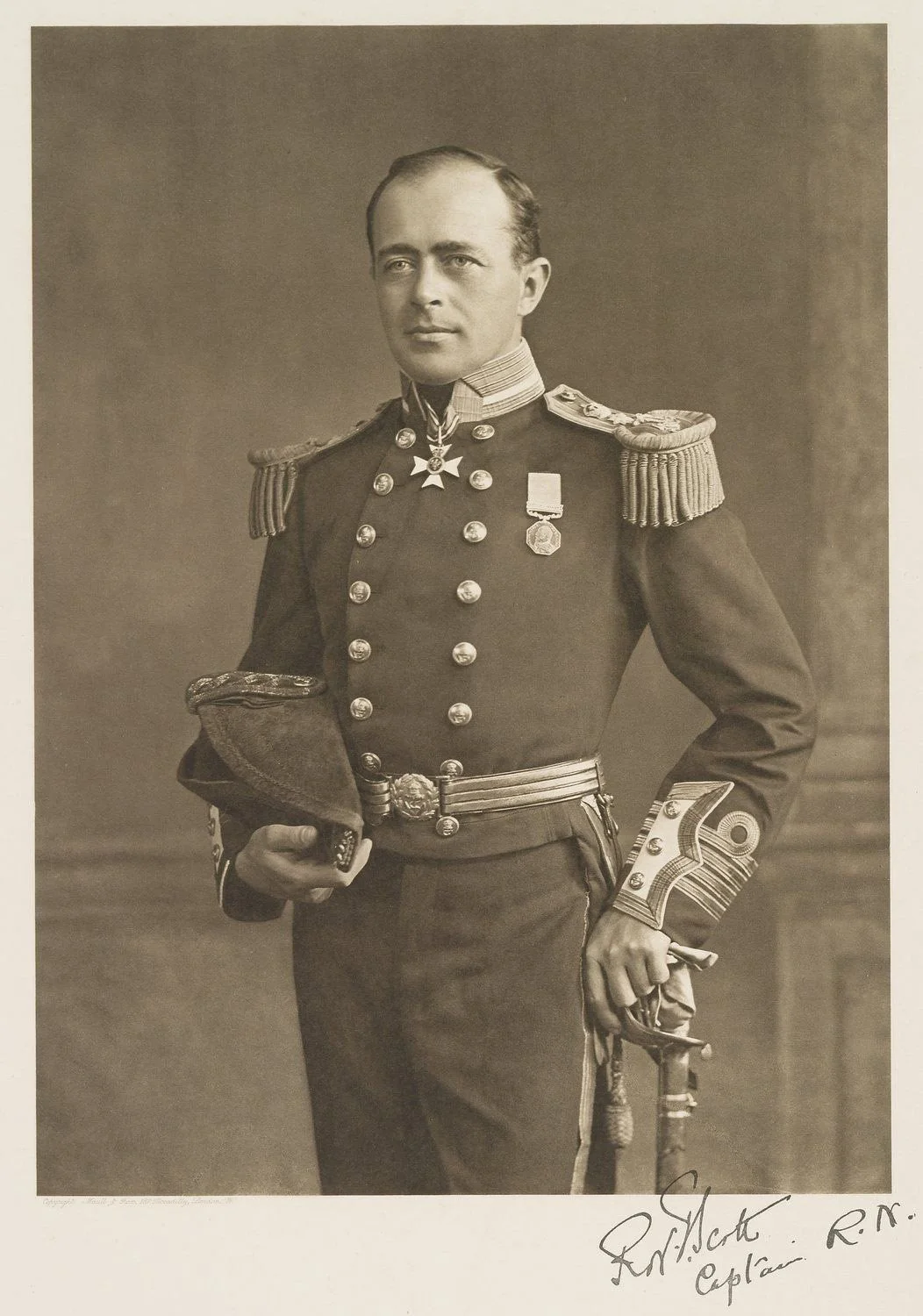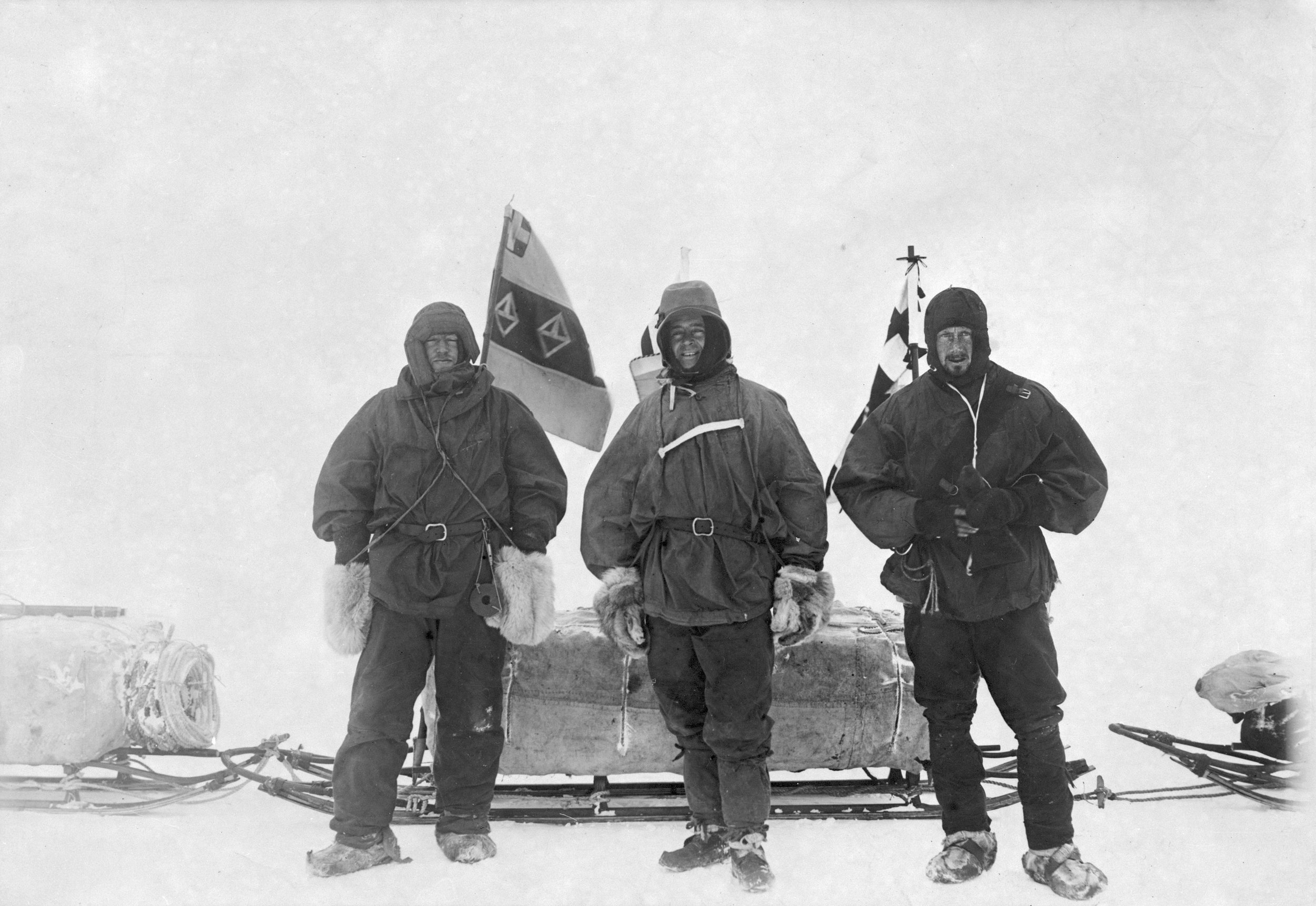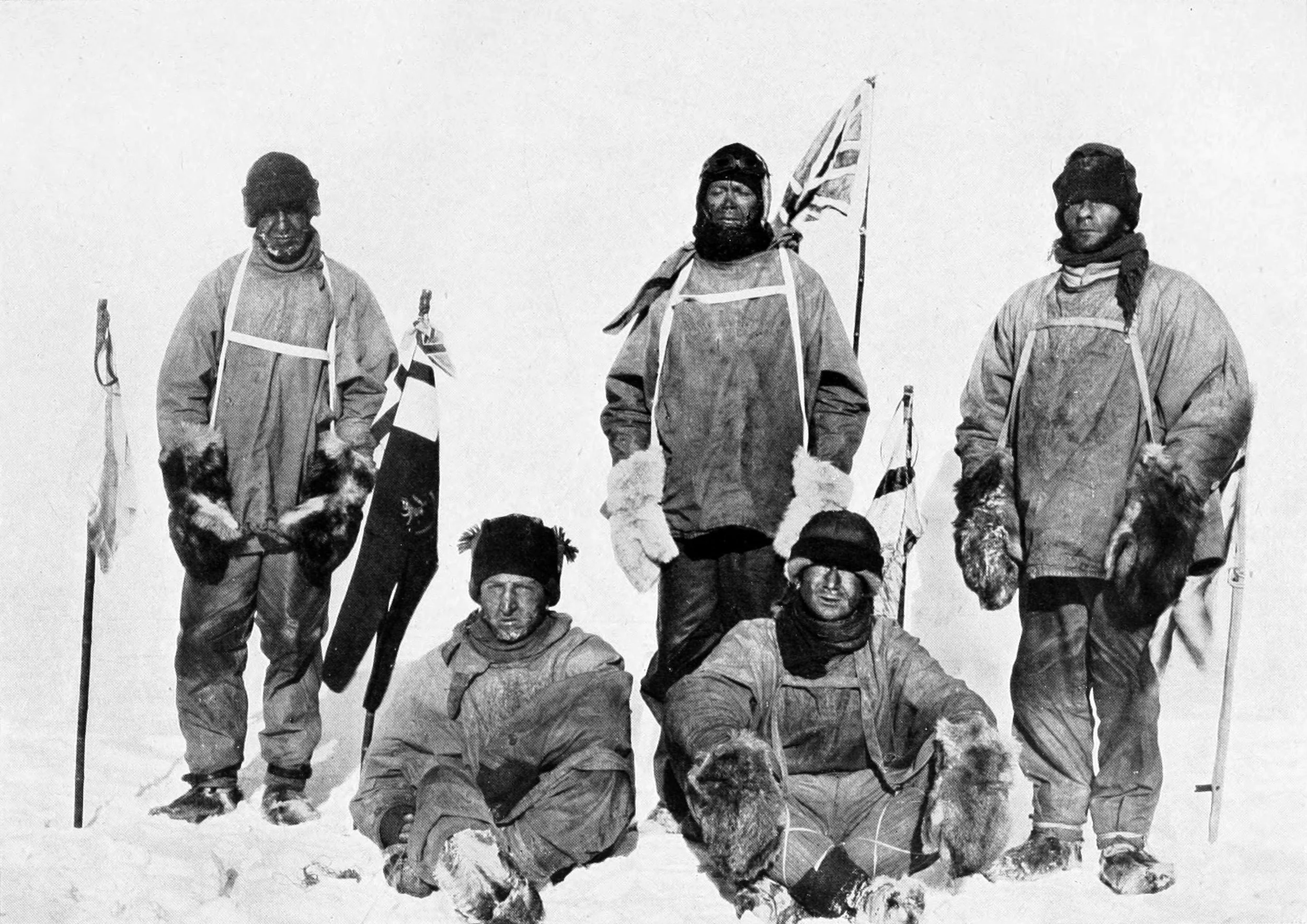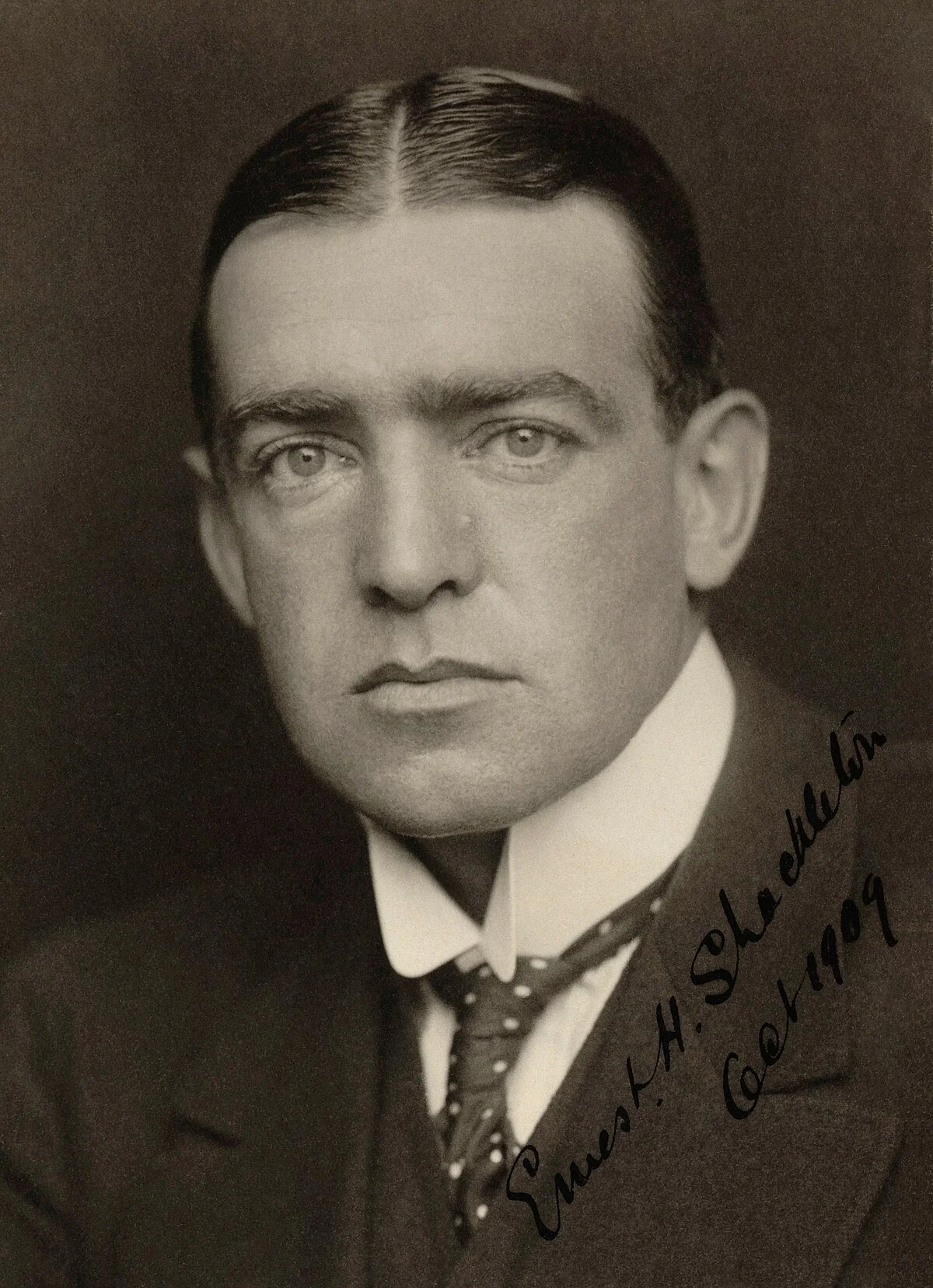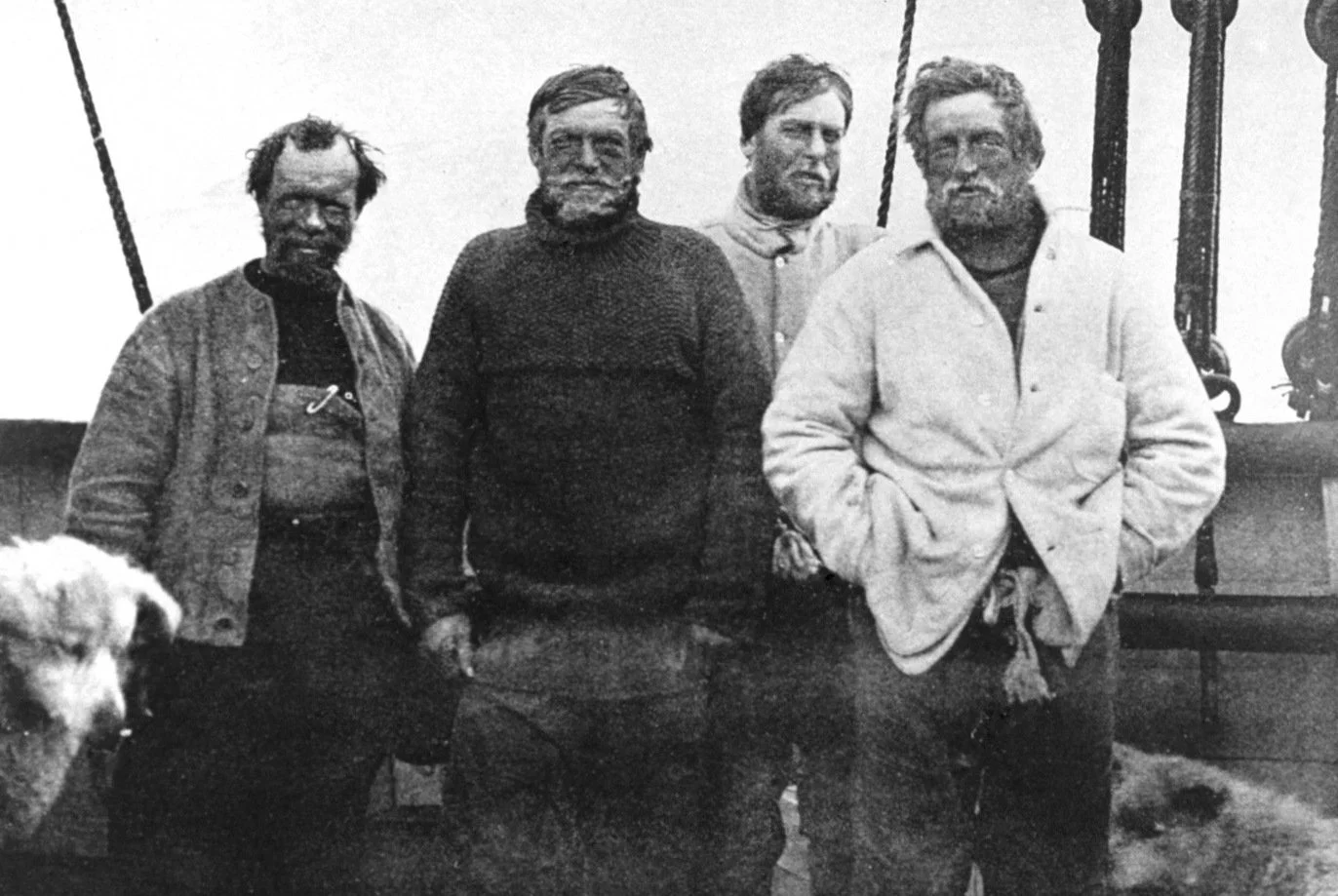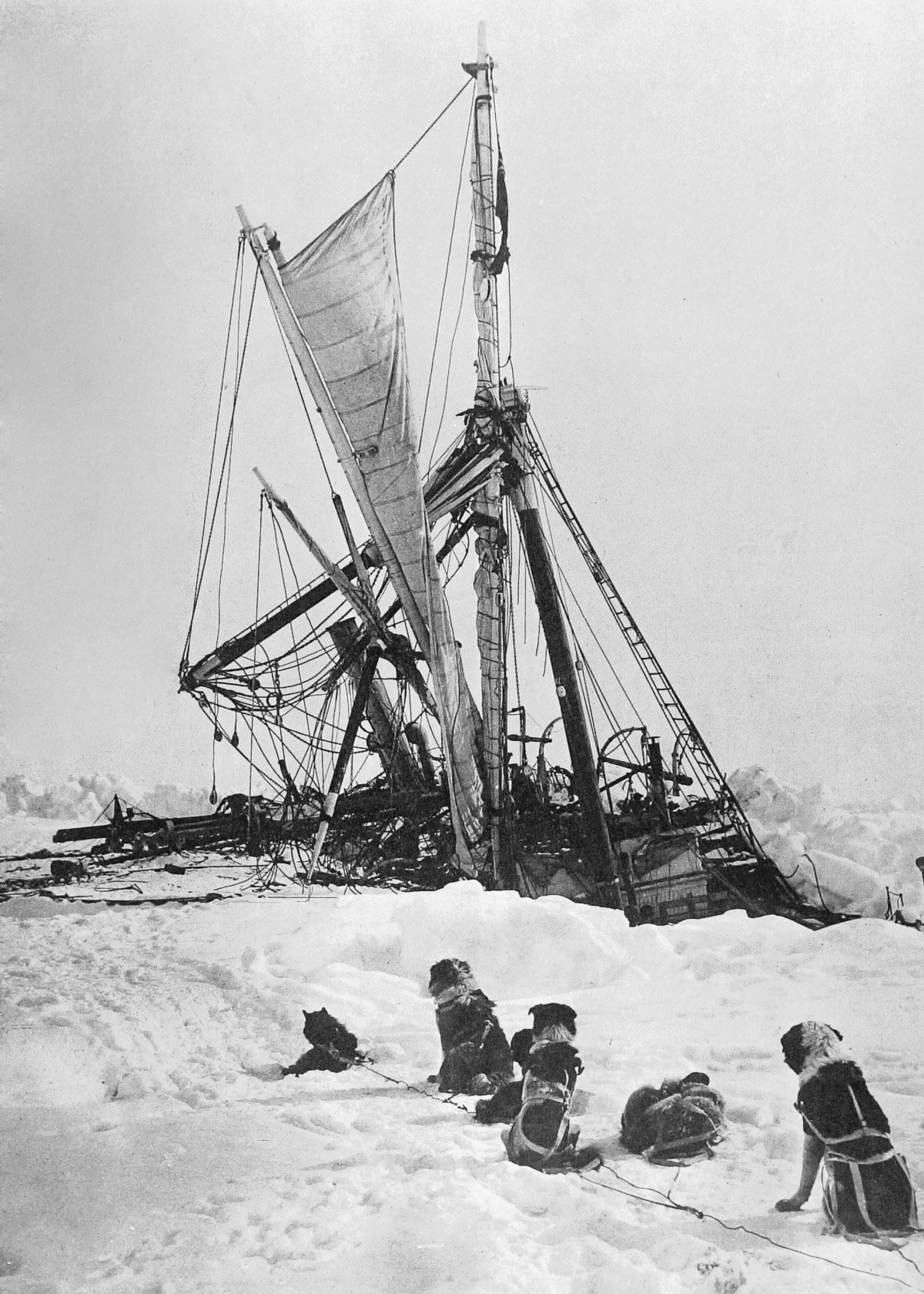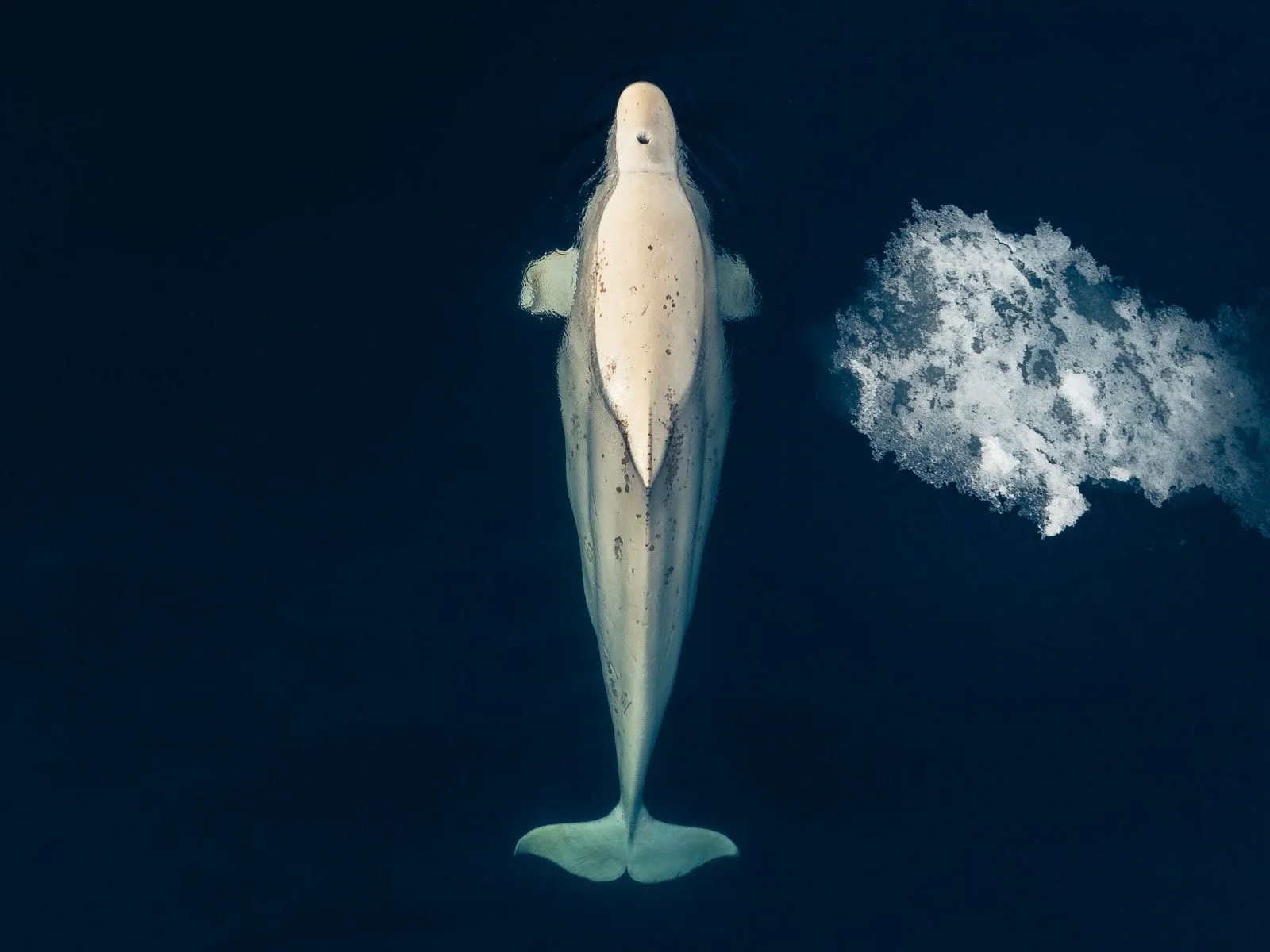Five Famous Explorers of the Arctic and Antarctic
Welcome to The Great Expedition Company Blog!
On the Great Expedition Blog, we cover and discuss all manner of topics, issues and things to think about when it comes to Greenland, Iceland and the polar regions (Arctic and the Antarctic). We do hope you can benefit from our expedition and travel experience in these areas and use the information found here to make choices about your future travel plans that suit you perfectly.
In the post, we will cover FIVE famous explorers and their respective famous explorations. They are:
Fridjof Nansen (1861-1930)
Roald Amundsen (1872-1928)
Captain Robert Falcon Scott (1868-1912)
Sir Ernest Shackleton (1874-1922)
Sir John Franklin (1786-1847)
For a joint scientific and geographical piece of organisation, give me Scott; for a Winter Journey, Wilson; for a dash to the Pole and nothing else, Amundsen: and if I am in the devil of a hole and want to get out of it, give me Shackleton every time - Cherry Apsley-Gerrard
For a joint scientific and geographical piece of organisation, give me Scott; for a Winter Journey, Wilson; for a dash to the Pole and nothing else, Amundsen: and if I am in the devil of a hole and want to get out of it, give me Shackleton every time - Cherry Apsley-Gerrard
In the annals of famous exploration, the Arctic and Antarctic stand as the ultimate test of human endurance and ingenuity. From the icy expanses of the Arctic to the frosty desolation, savage peaks and dry valleys of Antarctica, these frozen frontiers have lured adventurers for centuries.
So the main question is this: who were these famous explorers and what famous explorations did they undertake? Well, if you know nothing about famous polar explorers and the spirit that guided their great deeds of exploration, we think our blog about famous explorers and their famous explorations would be a great place to start.
Most fascinating in this world of famous explorers and their famous explorations of all are the extraordinary turns of events, for better or for worse they took place on these great conquests of our planet. The near misses, the strokes of good luck, the incredible misfortunes which feed these remarkable men in their unceasing quest to conquer new lands.
Let’s embark on a journey through time and space to uncover the tales of five famous explorers who braved the elements and left an indelible mark on history, and each one remarkable in their own unique way.
Sir John Franklin (1786-1847): Franklin’s Lost Expedition
The lost Franklin expedition is one of the most storied famous explorations ever. This is because the entire expedition of 127 men and their two ships, HMS Erebus and HMS Terror disappeared. Indeed, another morbid fact about this famous exploration is that more men have died looking for remnants of Franklin and his lost expedition than the original 127 men in the expedition itself!
The aim of the Franklin expedition was to find the Northwest Passage. What is the Northwest Passage and why seek out the northwest passage? The answer is both relatively simple and relatively complicated: The main objective of finding the Northwest Passage was to discover a navigable route through the Arctic waters of North America that would connect the Atlantic and Pacific Oceans. European explorers sought this passage for centuries as a potential shortcut for trade routes to Asia, which would bypass the long and hazardous journey around the southern tip of South America or through the Indian Ocean. All of this before the construction of the Panama Canal.
Sir John Franklin, shortly before setting sail on his ill-fated journey
By finding a viable Northwest Passage, explorers hoped to gain notoriety and establish a more efficient and lucrative trade route, thereby gaining economic advantage and prestige for their home countries. The discovery of the Northwest Passage was seen as a significant geographical and navigational achievement, offering the promise of new territories and resources for colonization and expansion.
However, the Northwest Passage proved elusive due to its treacherous conditions, including ice-covered waters, narrow channels, and shifting sea ice. Many expeditions in search of the Northwest Passage ended in failure or disaster, as explorers encountered harsh Arctic conditions, navigational challenges, and the risk of becoming ice-bound. Both ships of the Franklin Expedition were icebound for more than one year. By this point 20 % of the crew including Franklin himself had already died, then it is known that the vessels were abandoned as the remaining survivors attempted to head for the Canadian mainland.
What Happened to Franklin’s Famous Exploration of the Northwest Passage?
The key question about this famous exploration is this: what happened? If only it were that simple. It is known that both vessels became trapped in the ice. They had the latest technology for the time and three winters worth of food. A leading theory about the demise of the crew is that the tinned food that carried with them in their stores was contaminated with lead from the lead soldering used to seal the tins.
The only direct evidence about what happened to the expedition from the expedition itself is the Victory Point Note. Everything else has been deduced or gleaned from evidence gathered from the area around the ships.
The Victory Point Note. Thinly written evidence of what happened to Franklins lost expedition.
A Transcript of the Victory Point Note reads:
28 of May 1847
H.M.S.hips Erebus and Terror Wintered in the Ice in Lat. 70°5’N Long. 98°23’W Having wintered in 1846-7 [sic] at Beechey Island in Lat 74°43’28’’N Long 91°39’15’’W
After having ascended Wellington Channel to Lat 77° and returned by the West side of Cornwallis Island.
Sir John Franklin commanding the Expedition.
All well
Party consisting of 2 Officers and 6 Men left the ships on Monday 24th May 1847.
[signed] Gm. Gore, Lieut.
[signed] Chas. F. DesVoeux, Mate
25th April 1848
HMShips Terror and Erebus were deserted on the 22nd April 5 leagues NNW of this having been beset since 12th Sept 1846.
The officers and crews consisting of 105 souls under the command of Captain F. R. M. Crozier landed here — in Lat. 69°37’42’’ Long. 98°41’
This paper was found by Lt. Irving under the cairn supposed to have been built by Sir James Ross in 1831 — 4 miles to the Northward — where it had been deposited by the late Commander Gore in May June 1847.
Sir James Ross’ pillar has not however been found and the paper has been transferred to this position which is that in which Sir J. Ross’ pillar was erected.
Sir John Franklin died on the 11th of June 1847 and the total loss by deaths in the Expedition has been to this date 9 officers and 15 men.
[signed] F. R. M. Crozier Captain & Senior Offr
And start on tomorrow 26th for Backs Fish River
[signed] James Fitzjames Captain HMS Erebus
Franklin's men spent their first winter of 1845–46 on Beechey Island, where three crew members died and were buried. After travelling down Peel Sound through the summer of 1846, Terror and Erebus became trapped in ice off King William Island in September 1846 and are thought never to have sailed again. According to the second part of the Victory Point Note dated 25 April 1848 and signed by James Fitzjames (Captain of HMS Erebus) and Francis Crozier (second in command to John Franklin) , the crew had wintered off King William Island in 1846–47 and 1847–48 and Franklin had died on 11 June 1847.
The remaining crew had abandoned the ships and planned to walk over the island and across the sea ice towards the Back River on the Canadian mainland, beginning on 26 April 1848. In addition to Franklin, eight further officers and 15 men had also died by this point. Numerous relief expeditions were commissioned by the admiralty, but the admiralty officially stopped looking for the lost Franklin expedition in 1854. More expeditions continued to search for the th truth behind the demise of the Franklin expedition. These expeditions to investigate the fate of the original expedition gathered large amounts of spoken Inuit testimony. These verbal sources provided valuable additional information, including the discovery of various remains.
HMS Erebus and HMS Terror setting sail
In the years up to 1878, there were a total of 19 arctic expeditions to discover what happened to the original Franklin arctic expedition. Expeditions continued well into the 20th century, each one teasing more clues out of the debris and the remnants that lay strewn over the wastes of the Canadian Arctic.
Expeditions continued well into the 20th century, but it was not until the early 21st century, that the wrecks of the Erebus and the Terror were found, in 2014 and 2016 respectively. HMS Erebus was discovered by the Canadian Victoria Strait expedition in Wilmot and Crampton Bay and the wreck of HMS Terror was discovered by the Arctic Research Foundation in Terror Bay, off the southwest coast of King William Island at a depth of 69–79 ft (21–24 m).
Archeological reports, tissue analysis from exhumations and other evidence from the remains of members of the expedition indicate that a combination of cold, starvation and disease including scurvy, pneumonia and tuberculosis, all made worse by lead poisoning, killed everyone in the Franklin expedition. Ironically, the it was the failure of the Franklin expedition, and their subsequent disappearance which led to the mapping of several thousand miles of Canadian Arctic coastline, a much greater amount of coastline than would have been mapped if the expedition had returned safely. The failure of the Franklin expedition quelled the desire of the Royal Navy for future Arctic expeditions for quite some time until the Nares expedition of 1875-1876.
Fridtjof Nansen (1861-1930): Arctic
Scientist, famous explorer, diplomat and humanitarian. In 1888, Nansen made his first foray into polar exploration with the first crossing of the Greenland Ice Cap. Leading a small team of men, he traversed the treacherous interior of the island, covering over 300 miles on skis and sledges. The expedition was a resounding success, earning Nansen widespread acclaim and laying the groundwork for his future famous explorations.
Fridjof Nansen
Nansen’s most famous exploration was the Fram Expedition. The Fram Expedition was an ingenious mixture of sailing, drifting (in the pack ice) and marching (on ski and sledge). The expedition team intentionally trapped their ship in the Arctic ice to drift with the currents on the thin crust of the Arctic ice. The Fram Expediton absolutely smashed the previous Furthest North red, held by Greely at 83°24′S. On 8 January 1895, Fram’s position was 83°34′N.
Though the expedition team did not reach the North Pole as they had hoped, Nansen's innovative approach revolutionised polar exploration by bringing fresh thinking to the methods of polar exploration. Nansen and his crew ventured farther north than any previous explorers, reaching an unprecedented latitude of 86°13.6′N, an astonishing achievement for the period.
Nansen was not just a famous explorer. He was also instrumental in negotiating the independence of Norway from Sweden, served as Norway’s first ambassador to the United Kingdom, created the “Nansen Passport” which was a special passport for stateless persons and spearheaded the negotiations which led to the signing of the Svalbard Treaty, also known as the Spitsbergen Treaty.
Fridjof nansen’s Fram Expedition
Nansen's influence and expertise were instrumental in shaping the treaty's terms and facilitating international cooperation over the archipelago of Svalbard. The Spitsbergen Treaty, signed in 1920, established Svalbard as a demilitarized zone under Norwegian sovereignty but with certain provisions for international governance and access. Nansen's involvement stemmed from his longstanding commitment to Arctic exploration and his belief in the importance of international cooperation in the polar regions.
In addition to all of this, Nansen also earned the Nobel Peace Prize in 1922 for his work on the humanitarian crisis in the wake of World War I and the creation of the abovementioned ‘Nansen Passport’ for stateless persons which was recognised by up to 50 countries at its peak.
Roald Amundsen (1872-1928): Arctic and Antarctic
A protégé of Nansen, Roald Amundsen could be said to be one of the most successful and famous explorers in the history of exploration. Having been fascinated by the trials, tribulations and subsequence diappearence of the ill-fated Franklin expedition, Amundsen would end up undertaking some of the famous (and successful) explorations in history.
Roald Amundsen in animal furs
Belgica Expedition, 1897-1899:
Amundsen's first major expedition was as First Mate on the Belgian Antarctic Expedition led by Adrien de Gerlache, after whom the Gerlache Strait in Antarctica is named. The expedition became being trapped in ice for nearly a year and they were forced to overwinter. The Belgica Expedition provided valuable scientific data about the continent, which was still largely unknown at the time.
Gjøa Expedition, 1903-1906:
Amundsen's next endeavour was the historic Gjøa Expedition, during which he successfully navigated the Northwest Passage, succeeding where his hero Franklin had failed and countless others over the preeceding centuries. Sailing aboard the Gjøa, a small sloop (a one-masted sailing boat with a mainsail and jib (another type of sail) rigged fore (front) and aft (behind)), Amundsen and his crew became the first to traverse the Northwest Passage, mapping hitherto uncharted waters, making significant contributions to geographical knowledge.
1910-1912: South Pole Expedition:
How do you achieve eternal status in the world of exploration? Be the first man at the South Pole! Amundsen's most famous exploration was his successful journey to the South Pole. After initially signalling his intent to head north, Amundsen went South with Nansen’s trusty Fram instead. There are many reasons why he did this, but one of them was he was most certainly concerned that somebody would try to stop him, since it as customary at the time to allow the first man who had signalled his intent to “try” and return first, before a new attempt was made. There was a similar controversy between Scott and Shackleton and the latter’s attempt on the South Pole after the Discovery Expedition.
Departing from Norway in 1910, Amundsen and his team reached the pole on December 14, 1911, beating rival Robert Falcon Scott's British expedition by 35 days. The achievement cemented Amundsen's place in history as the first person to reach the South Pole. Travelling by dog and by ski and choosing a different route from previous attempts to reach the South Pole via the Axel Heiburg glacier rather than via McMurdo and the Beardmore Glacier as Shackleton and Scott had attempted, Amundsen pioneering an entirely new route to the pole which was actually 100 km closer. After spending three days at the Pole, they returning to Fram in the Bay of Whales.
Amundsen’s Journey was all the more astonishing because he had pioneered the entire route without benefitting from any reconnaissance from a previous expedition to inform the next one. Therefore, it was impossible for anyone to claim that he had achieved his goal via any ungentlemanly means, as was claimed by Shackelton when he used McMurdo Sound after promising Scott that he would not.
Roald Amundsen at the geographic South Pole
Robert Falcon Scott ( 1868-1912): Antarctic
Captain Robert Falcon Scott
Robert Falcon Scott, a British Royal Navy officer and polar explorer, led two expeditions to the Antarctic, the latter resulted in his death. Scott was the second man at the Geographical South Pole, along with the rest of his polar party of 4 others. Scott’s name goes down in the history books as one of the greatest polar explorers, for he pioneered the way to the South Pole.
Discovery Expedition “British National Antarctic Expedition” (1901-1904)
Scott's first major Antarctic expedition was the Discovery Expedition, which aimed to explore the unknown regions of the Antarctic continent, as well as reach the South Pole.
Discovery Expedition Souther Journey Party: left to right Shackleton, Scott and Wilson
Scott served as the expedition's leader, and although the primary goal of reaching the South Pole remained unachieved, the expedition made significant scientific discoveries and mapped large portions of the continent, reaching a Furthest South of 82°N before turning back and falling on significant hardship. Ernest Shackleton was a member of Scott’s party that headed towards the South Pole, but fell very ill and was invalided home on the relief ship Morning. This started a rivalry between the two polar Explorers that would colour their relationship for the rest of Scott’s Life. The Discovery expedition also pioneered territory in a westward direction. They discovered the polar plateau, became the first men to travel on it and also discovered two snow-free “dry valleys”, which we now know are the driest places on earth where it has not rained for 2 million years.
Terra Nova Expedition “British Antarctic Expedition” (1910-1913)
Scott's largest and most famous expedition, the Terra Nova Expedition. In many ways it was the official Royal Geographical Society’s official expedition, and was launched with the goal of being the first to reach the geographic South Pole, amongst many other goals and objectives. Departing in 1910, Scott and his team arrived in Antarctica the following year. On January 17, 1912, they reached the South Pole, only to discover that Norwegian explorer Roald Amundsen had beaten them by 35 days. Tragically, Scott and his entire party perished on the return journey, succumbing to exhaustion, starvation, and exposure.
One of the saddest things about the fate of Scott’s polar party was that their ordeal was laid bare for all in the diaries and journals they left behind.
Scott’s final words to the British public were:
Captain Scott’s Polar Party at the South Pole with Amundsen’s flag in the background
““We took risks, we knew we took them; things have come out against us, and therefore we have no cause for complaint, but bow to the will of Providence, determined still to do our best to the last ... Had we lived, I should have had a tale to tell of the hardihood, endurance, and courage of my companions which would have stirred the heart of every Englishman. These rough notes and our dead bodies must tell the tale, but surely, surely, a great rich country like ours will see that those who are dependent on us are properly provided for””
These revelations removed the expedition from the fog of uncertainty that surrounds the Franklin Expedition and helped to create the legend of Scott as National Hero. Despite the tragic outcome of his final expedition, Scott's legacy endures as a symbol of courage, determination, and the quest for discovery in the harshest environments on Earth. Scott’s epitaph, a quotation from Alfred Lord Tennyson’s Ulysses reads “to seek, to strive to find and not to yield”.
Sir Ernest Shackleton (1874-1922):
Ernest Shackleton after the “Nimrod” expedition, 1909
Last but not least on our list of famous explorers and their famous explorations, we have Sir Ernest Shackleton, A British explorer known for his legendary Antarctic expeditions, Sir Ernest Shackleton led three major famous explorations of the Southern Continent.
Discovery Expedition “British National Antarctic Expedition” (1901-1904)
The Discovery Expedition, led by Robert Falcon Scott, marked the first major British scientific expedition to Antarctica at the turn of the 20th century. Departing from England in 1901 aboard the ship Discovery, the expedition aimed to conduct scientific research and exploration in the uncharted territories of the Antarctic continent.
Ernest Shackleton played a big role in the Discovery Expedition as junior officer and as one of three of the southern party. During the expedition, the Discovery crew made several significant discoveries and achievements. They conducted geological surveys, magnetic observations, and meteorological research, providing valuable data that contributed to our understanding of Antarctica, reaching a Furthest South of 82°S.
On the journey to the South Pole, Shackleton suffered from bad health and for some sections walked beside the sledges and in some cases was carried on a sledge by the other members of the party. Shackleton was invalided out on the the relief ship Morning when it came in the following spring. Scott made some comments about Shackleton’s health in his 1905 book about the expedition which created a standing rivalry between them.
“What Nansen is to the North, Shackleton is to the South”
Nimrod Expedition “British Antarctic Expedition” (1907-1909)
Shackleton’s Nimrod Expedition, privately and hastily organised (in 10 months) and without the backing of the Royal Geographical society (who were saving their backing for Scott) was a tremendously successful expedition and Shackleton was welcomed back as a hero.
The most notable achievements of the expedition were achieveing a furthest south of 88° 23' S”, 97 miles from the Geographic South Pole, improving on Scott’s furthest south by a whole 6 degrees of latitude, and showing the way up the beardmore Glacier. This expedition was also the first summit of Mt. Erebus, the active volcano on Antarctica and the discovery of the South Magnetic Pole at 72° 15' S, 155° 16' E 17 January 1909
Shackleton and his polar party made up of Frank Wild, Marshall and Adams came very close indeed to perishing on their return journey. They were lucky with the weather, one very bad spell and they would likely not have made it. The return journey was also a race against tie, since Nimrod was due to leave north, and missing the ship would have meant overwintering int eh Antarctic and waiting for relief, and outcome to be avoided at all costs.
“The main results of the British Antarctic Expedition of 1907, under my command are as follows: we reached a point within 97 geographical miles of the South Pole, the only thing that stopped us from reaching the actual point was fifty pounds of food. Another party reached for the first time the south magnetic pole and another party reached the summit of the great active volcano mount Erebus. We made many interesting geological and scientific discoveries and had many narrow escapes throughout the whole time. A typical narrow escape was when we were going up the great flat here towards the pole. We were marching along, three of us harnessed to one sled in very bad light. Our last pony was being led by another man with the […] all of a sudden, we heard the shout of help form the man behind, we looked around and saw him supporting himself by his elbows on the edge of a chasm. There was no sign of the pony. The sledge was jammed with its bow in the crevasse. We rushed back to help the man out and then haul the sledge down. Then we laid down to have a look but nothing but a black draft was below. The pony may have fallen 1000 or 1500 feet. Anyhow, he’s gone. ”
Shackleton with his South Party after their attempt to reach the geographic South Pole. Let tot right Wild, Shackleton, Marshall and Adams
Endurance Expedition “Imperial Trans-Antarctic Expedition” (1914-1917)
After Roald Amundsen made it to he south pole with dogs and skis, what was left to explore? Rather a lot is the answer, but what was the great deed that still remained? For Shackleton, what remained was a crossing of the Antarctic continent, a feat which had never been attempted.
Endurance crushed by the ice
The plan for the Imperial Trans-Antarctica was that there would be two parties: the Wedell Sea party and the Ross Sea party. The Weddell Sea party would lay depots and cross to the South Pole and the Ross Sea Party would lay depots on the polar plateau for the Weddell Sea party once the reached the South Pole in order to allow them to continue their journey.
However, the Endurance Expedition of 1914-1917 was ill-fated and never really started in ernest: The Endurance became ice-bound a few miles short of their Weddell Sea landing site. After drifting in the pack ice of the Weddell Sea for nearly 800 miles, the Endurance was crushed and sank, and the men had to use the 3 lifeboats of the Endurance to row and sail to Elephant Island, a desolate pinnacle of rock in the southern ocean. Indeed, one might say that the real story of the Endurance has now become the greatest real life survival story ever told.
Leaving behind 23 men on Elephant Island in order to get help, Shackleton, Frank Worsely, Tom Crean, John Vincent and Timothy McCarthy set out in the James Caird, the best lifeboat of the three, in an 800 mile small open boat journey is widely regarded by historians as “the greatest small bat journey ever completed. The Endurance expedition has gone down in history as one of the most famous explorations or journeys ever undertaken, and is a tale that has been told and re-told and even re-traced in replicas of the James Caird.
Having miraculously arrived at South Georgia Island, they had arrived on the far side; the final stage of the expedition was to be a crossing of South Georgia, a mountainous and glaciated mountainscpape, with what can only be politely described as inadequate equipment.
The most remarkable achievement of the expedition was that, despite all of the hardship suffered, not a single man died. All of the Endurance party survived.
The Next Polar Explorer is YOU!
Mercifully, times have changes since the days of famous explorers Franklin, Nansen, Amundsen, Scott and Shackleton and the polar regions have never been more accessible. Modern vessels, satellite communication technology and GPS remove many of the hazards with which the famous explorers were beset.
Rest assured, there is still plenty of desolation and serenity in both the Arctic and the Antarctic. The Great Expedition COmpany offers YOU the chance to seek out your own exploration and get a taste of the adventure on the beautiful sailboats that we use indulge our predilections for the polar regions.
Choose your Small Ship Cruise Sailing Expedition for 2026:
Beluga Whale, Svalbard
Passing a glacier front, Greenland
Icebergs, Greenland


